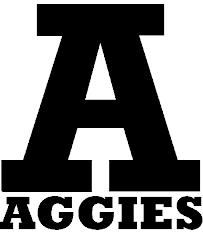“We had this custodian, he was a pretty old guy, he had no teeth. He was very poor, he couldn’t afford to go to the dental services. He talked kind of funny but he cared about the art barn. He cared so much about them that he looked out for the students. He looked after students, he looked after me, he looked after Larry. He had discovered that this other janitor had been stealing tools. I mean expensive power tools, because sculpture has a lot of expensive tools. And he had been watching him. This guy had figured out how to take the tools and hide them in the garbage can. He would come back later and take them out of the garbage can. But this guy was onto him and he had taken the tools out of the garbage can before he came back at night. He had saved us, he had saved the Art Department just a huge amount of money the way he looked after us. I was so thankful for that and the students were very excited and thankful about it. We decided to have this raffle and this fundraising. I went around my fellow faculty and they went around to the students saying ‘we are raising enough money to buy him a set of teeth for Christmas.’ And he was so happy; I don’t have to tell you. We bought him a set of teeth for Christmas and it was the best Christmas present that he ever got.”
“The Ayatollah was in, at that time still called Persia, now it is Iran. They had the revolution there and it even hit a small place like Logan, Utah. We felt it hear and things were happening…I remember one morning, suddenly I was stopped there [in Art Barn] before I went up the stairs. [Somebody said] ‘Adrian, do you realize we are having some problems with people, somebody came in last night and turned on the gas valves on the ceramic kilns.’ They turned them on, didn’t light the kilns, just turned it on and we happened to think that there must have been some terrorist from this Middle East situation that could have done that, I don’t know. If somebody had lit a cigarette and the whole place would have blown up and there would not have been an art barn anymore. I was obliged to warn the student to keep their eyes out for any suspicious happenings, strangers in the art barn, etc. And to always be on the lookout. We left the back door open, the back door to the back stairs, to the fire escape. We left the back door open in case.”
“Students would bring in their dogs because we were bye ourselves in the art barn. It was sort of an isolated place and one of the custodians had become very annoyed with that idea. So he wrote on the wall ‘No Dogs Allowed” [but he spelled it] A-L-O-U-D. Some student had written, right underneath it, “And No Dogs A-Quiet Either,” He wrote it in big, big letters.”
-Jason Neil-